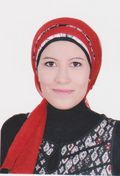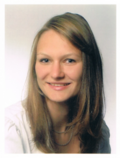1. Gläser A, Hammerl F, Gräler MH, Coldewey SM, Völkner C, Frech MJ, Yang F, Luo J, Tönnies E, von Bohlen Und Halbach O, Brandt N, Heimes D, Neßlauer AM, Korenke GC, Owczarek-Lipska M, Neidhardt J, Rolfs A, Wree A, Witt M, Bräuer AU. Identification of Brain-Specific Treatment Effects in NPC1 Disease by Focusing on Cellular and Molecular Changes of Sphingosine-1-Phosphate Metabolism. Int J Mol Sci. 2020 Jun 24;21(12):E4502. doi: 10.3390/ijms21124502.
2. Feng X, Yang F, Rabenstein M, Wang Z, Frech M, Wree A, Bräuer AU, Witt M., Gläser A., Hermann A., Rolfs A, Luo J, Stimulation of mGluR1/5 improves defective internalization of AMPA receptors in NPC1 mutant mouse, Cerebral Cortex, 2019, Oct 10
3. Neßlauer A-M., Gläser A., Gräler M., Engelmann R., Müller-Hilke B., Frank M., Burstein C., Rolfs A., Wree A., Witt M., Bräuer AU. A therapy with miglustat, 2-hydroxypropyl-ß-cyclodextrin and allopregnanolone restores splenic cholesterol homeostasis in Niemann-Pick Disease Type C1. Lipids Health Dis., 2019 June, 18:146
4. Meyer A,*, Gläser A.*, Bräuer AU., Wree A., Strotmann J., Rolfs A., Witt M. Olfactory performance as an indicator for protective treatment effects in an animal model of neurodegeneration, Front. Integr. Neurosci. 2018 Aug. 12;12:35
5. Ebner L., Gläser A., Bräuer AU., Witt M., Wree A., Rolfs A., Frank M., Vollmar B., Kuhla A. Evaluation of Two Liver Treatment Strategies in a Mouse Model of Niemann-Pick-Disease Type C1., Int. J. Mol. Sci., 2018 Mar, 19 (4): 972
6. Reetz J., Hildebrandt S., Schmidt A., Meier C., Herchenroder O., Gläser A., Witt M., Pützer BM., Wree A., Novel subventricular zone early progenitor cell-specific adenovirus for in vivo therapy of central nervous system disorders reinforces brain stem cell heterogeneity, Brain structure & function, 2015 May, 221 (4): 2049-59
7. Lukas J., Pockrandt A., Seemann S., Sharif M., Runge F., Pohlers S., Zheng C., Gläser A., Beller M., Rolfs A., Giese A., Enzyme Enhancers for the treatment of Fabry and Pompe Disease, Molecular Therapy , 2015 Mar, 23 (3): 456-464
*Contributed equally as first author.








